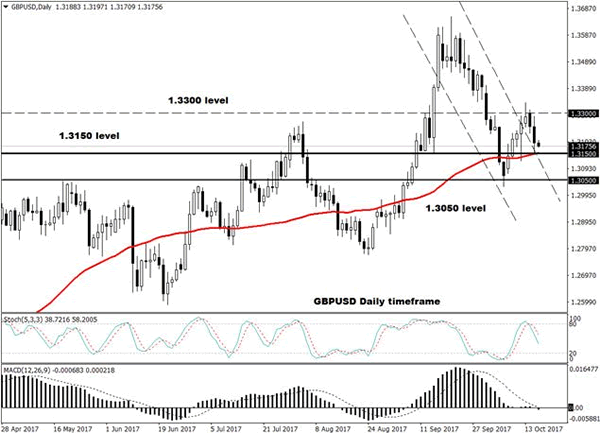Investors itching for another opportunity to offload Sterling, were given thethumbsup on Tuesday, after BoE officials sounded more cautious than anticipated during their testimony to Parliament.
Although BoE Governor Mark Carney said the MPC believed a rate hike may be needed in the “coming months”, his refusal to offer any clear signs on whether the central bank will take action in November, simply punished Sterling. Dovish signals radiating from the newest members of the bank’s Monetary Policy Committee also played a role in the Pound’s selloff, as investors started to question the prospect of an interest rate hike in November.
With Bank of England’s new deputy governor Dave Ramsden believing that a hike is not needed “in the coming months” and Silvana Tenreyro suggesting that any move is “very contingent on data”, November’s MPC meeting could be dominated by doves. While markets still widely expect that the central bank will proceed with raising rates by +25 basis points in November to quell inflation, the move may be considered as a dovish hike. With Britain’s macroeconomic landscape still fragile amid Brexit, investors may not consider the hike as the beginning of a tightening cycle but simply, a “once-off”.
While Carney maintained a safe distance from monetary policy discussion during the testimony to Parliament, he used the opportunity to express concerns over Brexit. With the Bank of England Governor warning that a “no deal” Brexit would have a negative impact on the economy, the British pound is likely to become even more sensitive to the Brexit negotiations.
The main risk event for Sterling this morning will be the UK employment report, which will be closely watched for any signs of Brexit having a negative impact on wage growth. While Britain’s unemployment rate is currently at a 42-year low, subdued wage growth continues to weigh on sentiment and is a headache for BoE policymakers. If average earnings fail to pick up, consumers are likely to feel the pinch further, especially after inflation hit a five and a half year high at 3% in September.
Taking a look at the technical picture, the GBPUSD is under pressure on the daily charts. Prices failed to break above the 1.3300 resistance, resulting in a decline back towards 1.3150. Technical lagging indicators such as the MACD have crossed to the downside while prices are approaching the 50 SMA. A breakdown below 1.3150 may encourage a further decline lower towards 1.3050.














